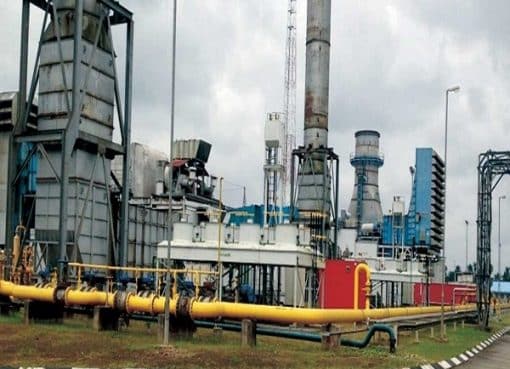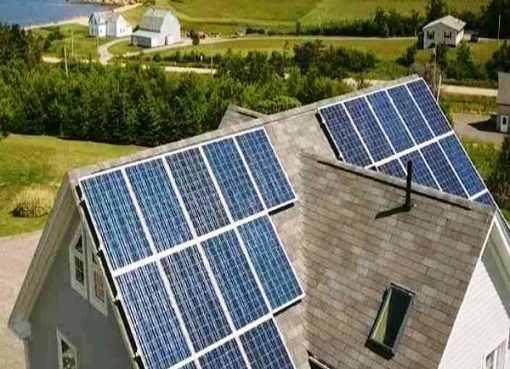What are wind energy and solar energy?
Putting it simply, wind energy is the process of air flowing through wind turbines to automatically generate power by converting the kinetic energy in the wind into mechanical power.
Wind energy can provide electricity to utility grids and homes as well as provide energy to charge batteries and pump water. The three main kinds of wind power are broken down by the American Wind Energy Association into the following:
Utility-scale wind: Wind turbines bigger than 100 kilowatts that deliver electricity to the power grid and end user via electric utilities or power system operators;
Distributed wind: Wind turbines smaller than 100 kilowatts that are used to directly provide power to a home, farm or small business as its main function;
Offshore wind: Wind turbines placed in large bodies of water, generally on the continental shelf.
Interestingly, wind energy is also an indirect form of solar energy. According to the Wind Energy Development Programmatic EIS, “winds are caused by the uneven heating of the atmosphere by the sun, the irregularities of the earth’s surface, and rotation of the earth.”
Solar power is energy derived from the sun’s rays and then converted into either thermal or electrical energy.
According to the Solar Energy Industries Association (SEIA), solar energy can be created in the following three ways: photovoltaics, solar heating and cooling and concentrating solar power.
Photovoltaics: Generates electricity directly from sunlight via an electronic process to power small electronics, road signs, homes and large commercial businesses.
Solar heating and cooling: Uses the heat generated by the sun to provide water heating or space heating and cooling.
Concentrating solar power: Uses the heat generated by the sun to run traditional electricity-generating turbines.
Cleantech Outlook Market Cover
What are the advantages of wind energy and solar energy?
Now that we’ve covered the basics of wind energy and solar energy, let’s look at the advantages of these two clean energy sources.
In terms of advantages, as carbon-free, renewable energy sources, wind and solar can help reduce the world’s dependence on oil and gas. These carbon fuels are responsible for the harmful greenhouse gas emissions that affect the quality of our air, water and soil—which all contribute to environmental degradation and climate change.
For homeowners and businesses, the ability to generate and store electricity onsite provides a backups source of power for when energy needs cannot be filled by the traditional utilities grid. For example, during California’s most recent wildfire seasons, large-scale utilities companies such as PG&E (NYSE: PCG) have shut off power to tens of thousands of people during record heatwaves in an effort to prevent fires like the several dozen linked to downed power lines in the past few years. Solar energy generated onsite could help homeowners and businesses to not only fight climate change, but have a reliable backup energy source when utility-scale grids are shutdown.
Solar panel installations are easy to use and can also save on energy bills. In some regions, users may qualify for tax breaks or energy rebates if they produce excess energy that can be delivered to the utility grid. In Canada, for example, there are at least 77 clean energy incentive programs available that offer a combined total of 285 energy efficiency rebates and 27 renewable energy rebates.
Both solar energy and wind energy are on the path to becoming the world’s most affordable sources of energy. “Land-based utility-scale wind is one of the lowest-priced energy sources available today, costing 1–2 cents per kilowatt-hour after the production tax credit,” according to the U.S. Department of Energy (DOE). “Because the electricity from wind farms is sold at a fixed price over a long period of time (e.g. 20+ years) and its fuel is free, wind energy mitigates the price uncertainty that fuel costs add to traditional sources of energy.”
The price of harnessing the sun’s power is dropping each year on technology advancements. In the past decade, solar energy has been on a low-cost trajectory, sliding from US$0.51 cents per kilowatt-hour (kWh) in 2010 to US$0.15 cents per kWh in 2018, according to DOE figures. The US agency estimates solar costs falling further to US$.05 cents by 2030.
Future outlook for wind energy and solar energy
Looking ahead for the wind energy sector, the Global Wind Energy Council (GWEC) reports that 355GW of new capacity will be added between 2020 and 2024, representing a CAGR of 4 percent. The GWEC sees government support mechanism as a key driver of this growth, giving way to market-based growth in 2021. “Developing markets and offshore will play a larger role in driving the global wind market,” said the report’s authors. “Offshore wind is expected to grow from 6GW in 2019 to nearly 80GW in 2024, bringing its market share in global new installations from 10 [percent] in 2019 to 20 [percent] by 2024.
As for solar energy, the IEA’s World Energy Outlook 2020 report pegs solar as now cheaper than coal. Along with wind energy, solar energy is expected to make up 80 percent of the global electric energy market by 2030. “I see solar becoming the new king of the world’s electricity markets,” said IEA Executive Director Fatih Birol in a news release. “Based on today’s policy settings, it is on track to set new records for deployment every year after 2022.”
Lux Research predicts that the transition away from fossil fuels to renewable energy sources will be accelerated by several years due to the impact the COVID-19 pandemic is having on energy markets all over the world. According to the research firm, economic relief packages contain trillions of dollars for renewable energy technology research and development as well as the deployment of low- and zero-carbon infrastructure. By 2025, Lux see the consequences of COVID-19 resulting in accelerated investment in energy storage and power-generation projects.
Source: Energycentral










